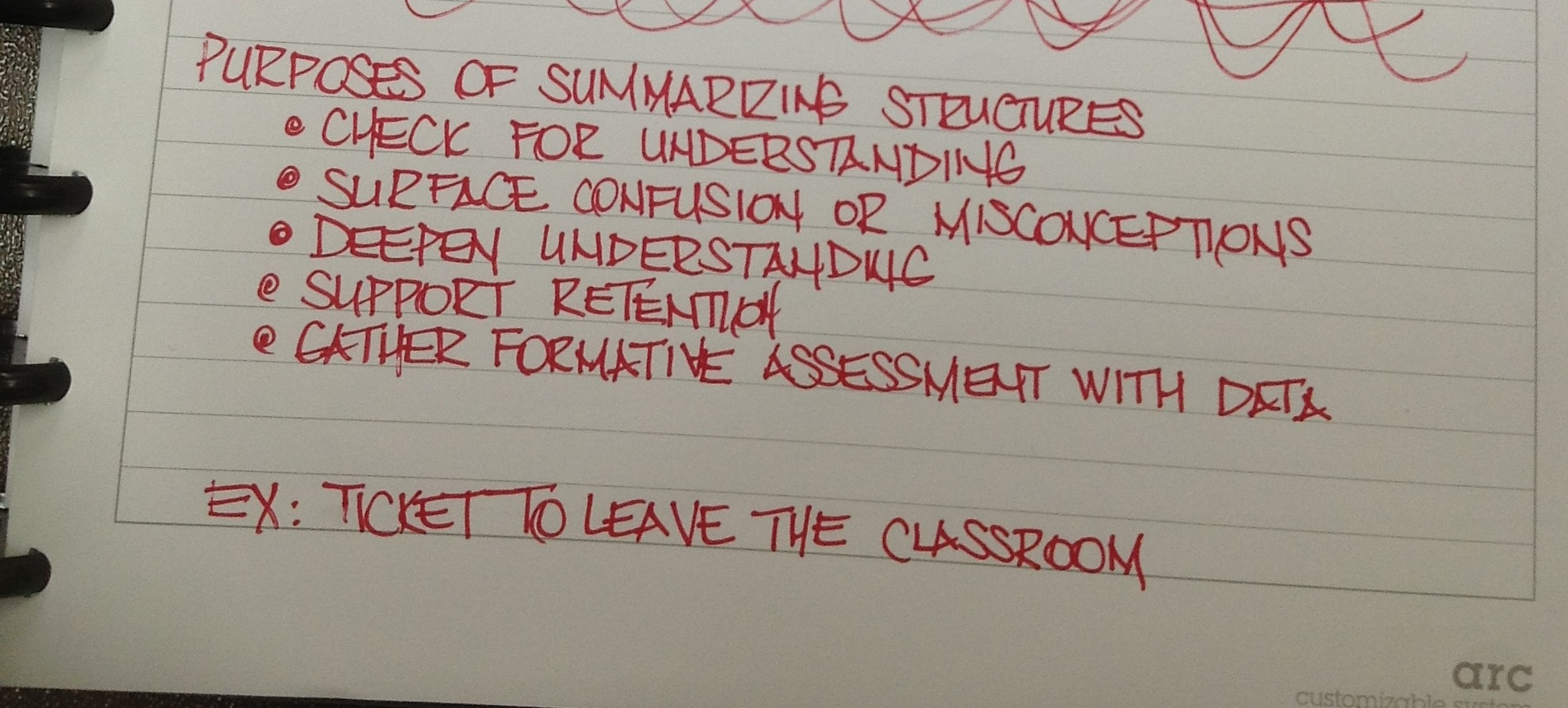Principals are learning specifics on how to observe teachers and what to look for when teachers are “Making Thinking Visible.” Dr. Saphier pointed out the value of credible communication when observing and writing an observation. The three elements of credible communication are; Claims, Evidence and Impact. Examples below show how they make written observations more meaningful:
For example:
- Claim: The students in the third row were not engaged in the lesson.
- Evidence: At 10:15 a.m., student at desk A was texting a friend, student at desk B was reading a book under her desktop, and student at desk C was drawing pictures of animals.
- Impact: They were unable to answer questions regarding the topic of the lesson.
Evidence may be data collected or information posted on bulletin boards or written on the white boards. Classrooms should have examples of work that meet high standards (exemplars) posted for students. Students need to know what criteria will be used to judge the work they are doing.
Another example:
- Claim: The students were informed in a clear manner about the objective of the day.
- Evidence: The objective for the day was written on the board. Samples of exemplars related to the objective were on a bulletin board. Students referred to the objective when doing their assignment.
- Impact: Students were on task and when asked what they were doing they could explain it in relation to the objective of the day and how it was worthwhile for them.
Any statement a principal makes in a written observation should be supported by evidence and state the impact on the students in the classroom.
During an observation the administrator should be writing down quotes, and precise written comments or feedback on what he/she is observing in the class. Dr. Saphier shared that feedback is value-neutral. “Feedback describes what an individual did or did not do for the purpose of changing or maintaining a standard of behavior or performance. It is most effective when it is timely, specific, criterion-based, and when it involves the student.”
For example, what is often written in an observation might be: “Great instructions on the whiteboard.”
Feedback would be: “Your diagram on the whiteboard specifically stated the three most important writing characteristics you expected in the student’s paragraph.
Another topic presented was the value in using summarizers. It is a technique principals can use at the end of a meeting or presentation to check what the staff or audience has perceived as important or what information they gained. A summarizer provides an opportunity to check and see what was understood. Below is a visual that points out the purposes of summarizers…. More to follow in December.
